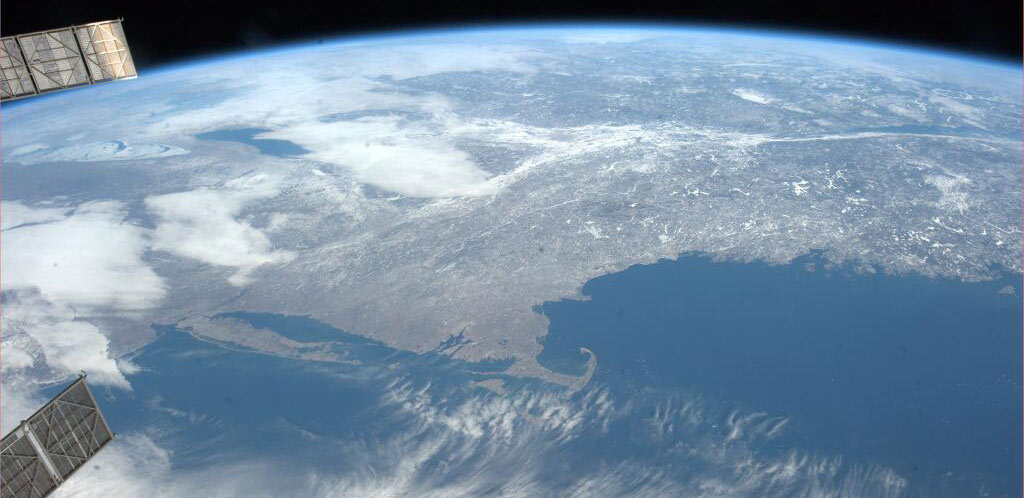
What’s Up in Space News? April 2014
April 2014 :
Happy spring, fellow northern hemispherians! While winter doesn’t seem to want to loosen its cold grip on New England just yet, there have been quite a lot of hot stories in space news over the past several weeks. Here are a few of the steamiest:
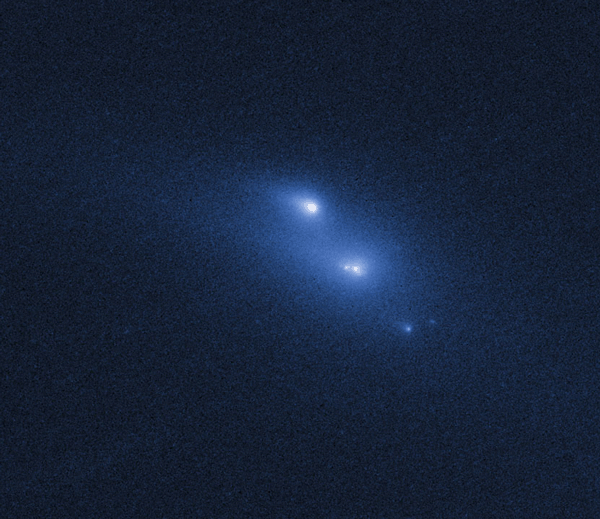
Hubble Watches as an Asteroid Crumbles
Observations with the Hubble Space Telescope over the course of several months revealed the slow but steady breakup of a 200,000-ton asteroid, thought to be the result of tidal stresses created by its rotation, nudged ever so slightly over time by the force of sunlight. In space even a sunny day (or at least a whole lot of them) can be an asteroid’s undoing! Read more here.
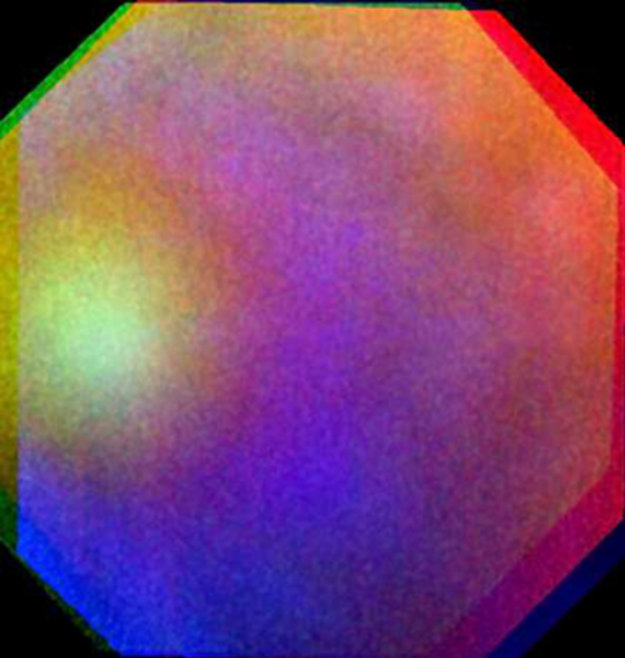
A “Glorious” Rainbow on Venus
Glories are commonly seen on Earth as a rainbow-colored ring surrounding the shadow of an aircraft or the shadow of a person’s head in a sunlit fog, but one has also now been seen in the atmosphere of Venus by Europe’s Venus Express spacecraft. But the colors are a little off – Venus’ thick atmosphere is full of sulfuric acid, not just water! Learn more here.
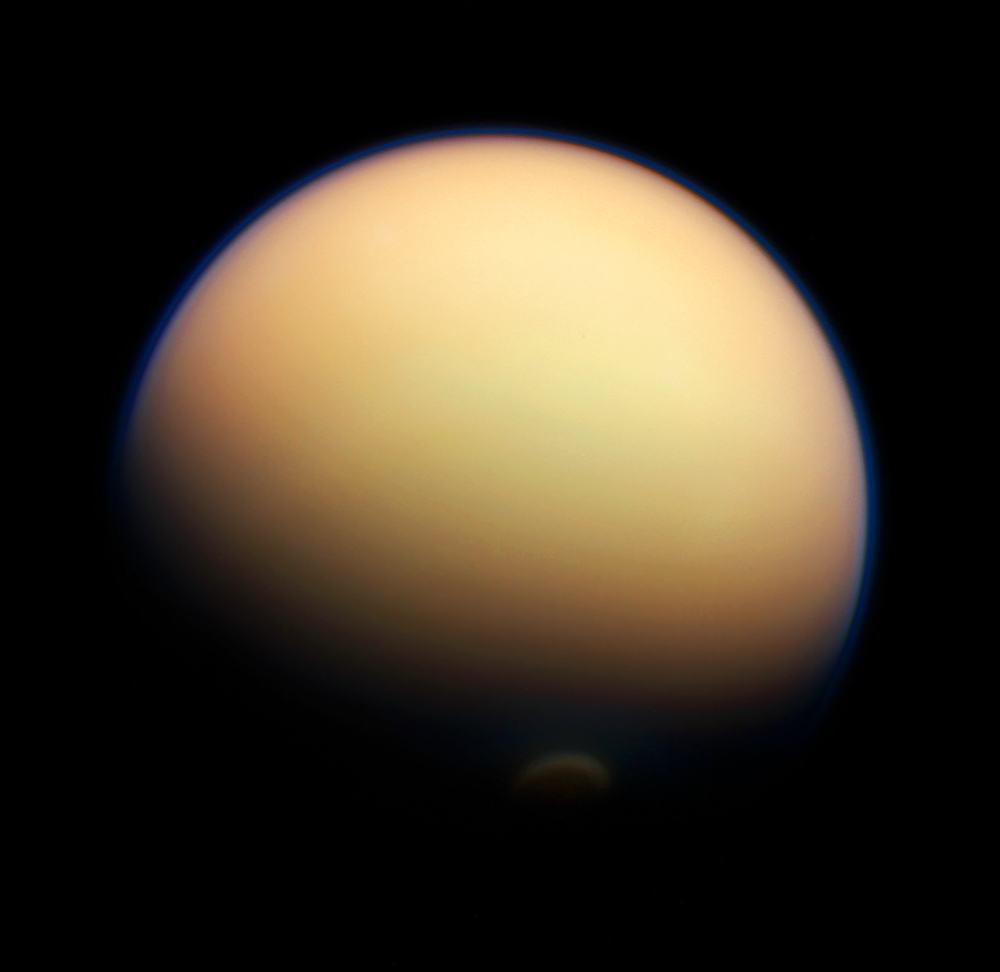
Surf’s Up on Titan!
Titan is known to harbor large lakes, seas, and rivers on its surface – except they aren’t filled with water but rather liquid methane and ethane in its incredibly cold -300ºF temperatures. And what’s been even stranger is the lack of any texture on the lakes’ surfaces… radar data from Cassini has shown them to be literally smoother than glass! But the winds may be picking up – some researchers have announced what seem to be waves on Titan’s lakes. At around 2cm high, small waves, yes, but it’s something (and, just like Earth, the seasons on Titan they are a-changin’.) Read more.
The Largest Yellow Hypergiant Star Found
An international team of astronomers using the European Southern Observatory’s VLT in Chile have identified the largest “yellow hypergiant” star, a behemoth named HR 5171 located 12,000 light-years away in the constellation Centaurus (unfortunately for us Rhode Islanders, it’s only visible from south of the equator.) This enormous star is over 1,300 times the diameter of the Sun and half again as big as Betelgeuse – and it even has a smaller (but still enormous) companion that’s so close, the two are touching. It’s like a monster stellar peanut – read more here.
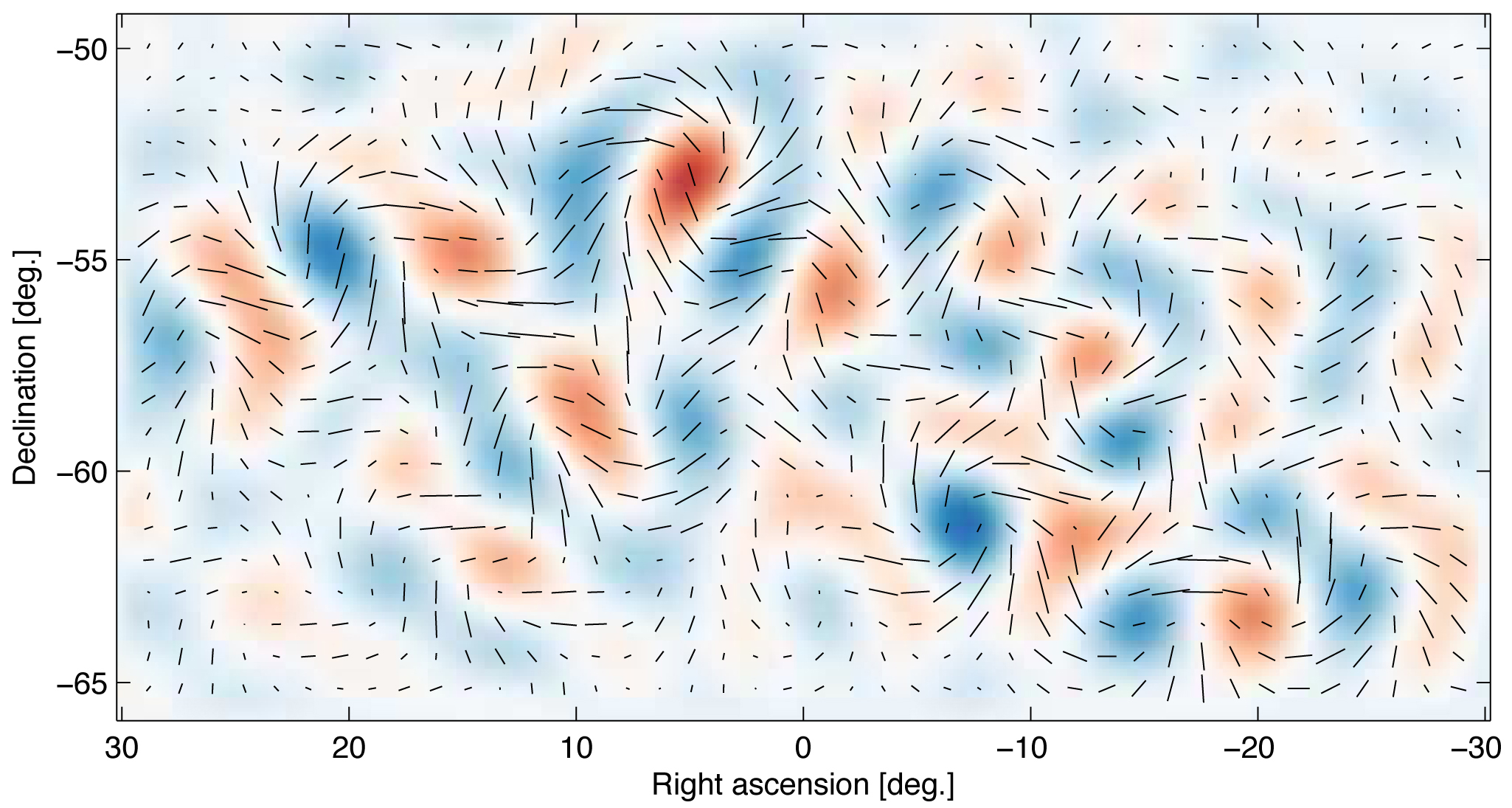
New Discovery Makes the Best Case Yet for the Big Bang Theory
No, not Sheldon and Penny but the real Big Bang theory, which proposes that the entire Universe bloomed into existence from an astoundingly-dense point 13.8 billion years ago. This event is supported by many current observations, and on March 17 astronomers announced what could be called the best case yet for the Big bang: patterns of polarized light in the cosmic microwave background that are a signature of primordial gravitational waves within spacetime itself – literally ripples of the rapid expansion of the early Universe. And what’s more, this discovery may even hint at the presence of other Universes out there. Find out more here (and check out a simplified 2-minute video of the findings here.) Bazinga!
Venus May Have Active Volcanoes
…and I’m not talking about millions or even thousands of years ago, but right now! Data from ESA’s Venus Express orbiter have shown bright flashes above a rift zone on Venus’ surface called Ganiki Chasma. These flashes were found to indicate hot zones even hotter than normal on Venus (which is saying a lot) – between 908 and 1,520ºF. The area where the flashes originated is near a known volcano called Maat Mons, which is thought to have erupted as recently as 10 to 20 million years ago – so researchers suspect ongoing volcanism might be continuing today. Venus and volcanoes? Now that’s hot! Read more here.
As you see it’s been a busy few weeks in space and those were only just a few of the recent stories! There were many more, including:
…NASA’s Dryden research facility getting renamed in Neil Armstrong’s honor, Earth got buzzed by a couple close-passing asteroids, like 2014 DX110, Skylab astronaut Bill Pogue passed away, NASA launched a rocket into an aurora, we get an idea of how big the Solar System REALLY is, “Planet X” got the axe, a brand-new Cosmos series kicked off on Fox (34 years after Carl Sagan’s originals), Mercury was found to have shrunk double the amount previously thought, a new, giant interactive map of the Moon’s north pole was released (a must-see), a new gully appeared on Mars (but it’s not all wet) and Hubble gave us all a gift for its own 24th birthday: newborn stars blasting gas inside a monkey’s head.
So happy vernal equinox everyone, and let’s hope actual spring weather doesn’t wait too long to get to Rhode Island. (Only another 146 million miles until summer!)
Do you have any questions about these stories or want to know where you can learn more? Feel free to contact me at jpmajor@me.com, and follow me on Twitter @JPMajor and on Facebook as LightsInTheDark. Ad astra!
Jason is a freelance graphic designer and a space news blogger currently living in Warwick, RI. He writes for Universe Today, Discovery News, and on his blog LightsInTheDark.com. He has also been featured on National Geographic News, Space.com, io9.com, PhysOrg, NBC News Cosmic Log, and has attended several launch events at NASA’s Kennedy Space Center.



